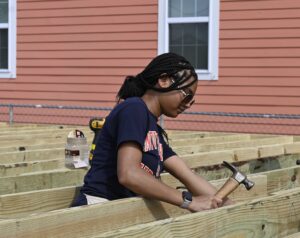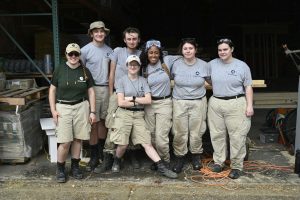The connection between St. Louis and New Orleans is a significant part of American history, and the annual service trip for students at the Rockwood Schools in St. Louis is a yearly renewal of that deep bond. Not only are the two cities connected by the Mississippi River and their historical connections, but also by more recent events, as St. Louis was one of the cities to receive a significant number of Hurricane Katrina evacuees. That bond is part of what Tim Jones, an assistant principal in the Rockwood School District, hopes to teach the students each year.
“They’re learning appreciation for the United States,” he said. “They’re learning not to be so tunnel visioned about St. Louis or Missouri or the Midwest. They can look at the whole region down here. That’s why we try to do other things instead of just coming to New Orleans. We try to go over to Mississippi then go to a small town there. We went over to Baton Rouge. They realize we’re all connected, especially obviously between New Orleans and St. Louis. There’s a rich history with the Louisiana Purchase, the Mississippi River, hundreds of years ago, that was the lifeblood of the Midwest and St. Louis. We were the gateway to the West. It’s a chance to bring us closer and let the kids see this.”
The schools have been volunteering for ten years, ever since the storms. Their first three years were spent helping out in Perlington, MS, and each year, they return there to visit old the places they have worked previously–and to head over to the beach in Pass Christian. They work around the build schedule and use the weekends to see more of New Orleans, of Louisiana, and of Mississippi. This year, they even caught an LSU/UNO baseball game in Baton Rouge. This dose of regional culture often has as much impact on the students as building on site.
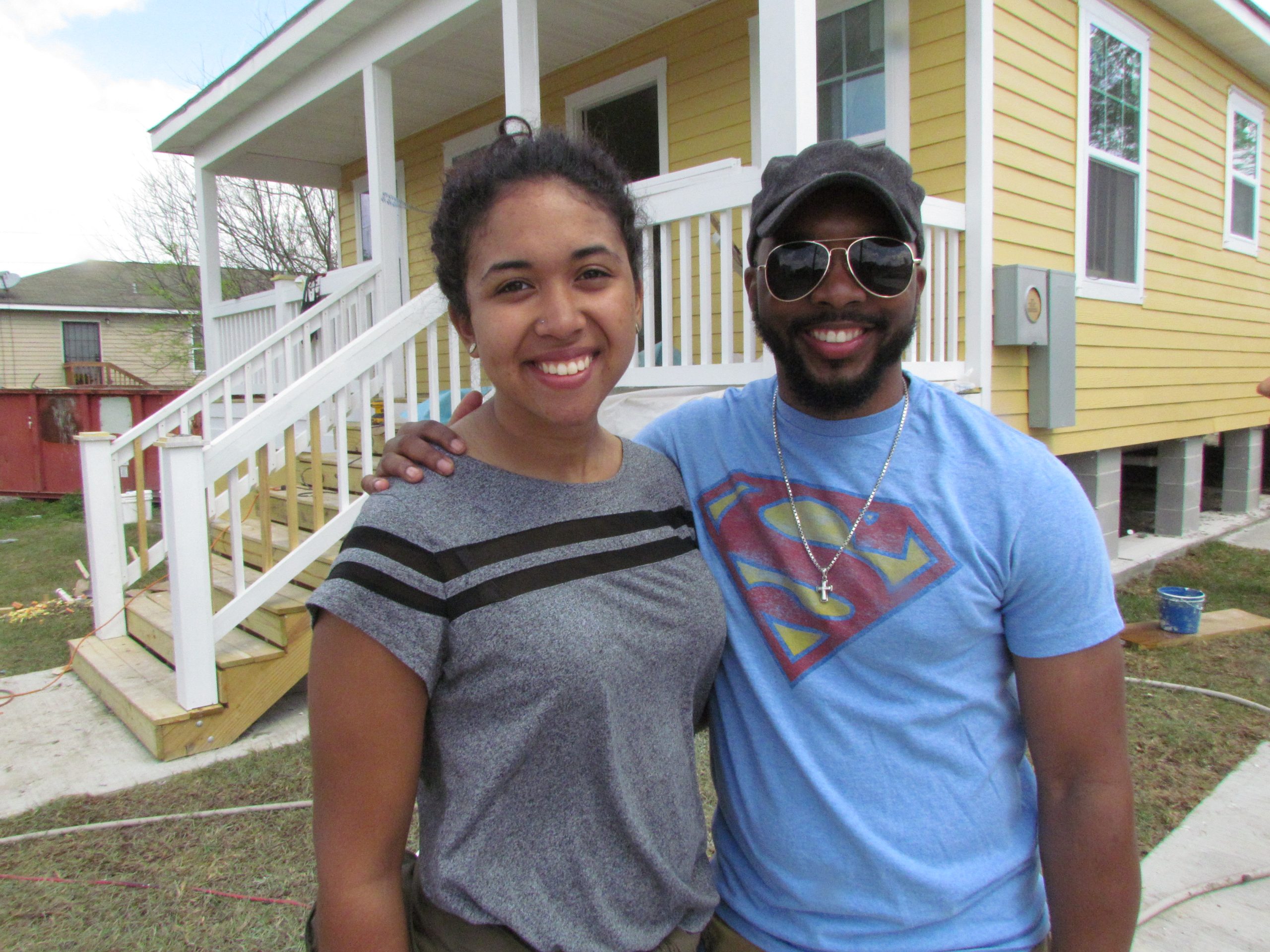
“[Last year’s trip] was my first time ever stepping foot in New Orleans,” said Shannon Rogers, a first year college student and alumna volunteer, “and it sealed the deal for me that I wanted to go to UNO, because even ten years later… you could see the gratitude of the people walking down the street, saying ‘thank you so much,’ or being interested in where you’re coming from, why you are here. It’s so crazy to me how ten years later, people are still struggling just as much as they did when Katrina hit, how it’s still so difficult for them to get by everyday. To come here and help build a house that you know is going to be a significant difference to someone is a big deal. I was determined to come on this trip this year, and I will definitely be back for as long as I can come. I’m grateful to be here. It’s an honor to me.”
Terran Glover volunteered for the trip for the first time in 2008, and he has returned on six different trips since. He had family in New Orleans and Baton Rouge when Hurricane Katrina hit, and in the immediate aftermath, contact with them was limited at best. He was determined years later to make the volunteer trip, knowing that he would be helping others like his family who were affected by the storms.
“It really meant something, coming down here and being able to work on the houses,” he said. “It was definitely a different experience, but working on the houses, meeting people whose houses we were working on, they came out and hugged us every day. They had tears in their eyes. They were just extremely thankful. It was somebody different every day. It didn’t matter if it was their area or not, they would come by, shake our hands, and just show so much gratitude to have us down here. It’s one of the most rewarding feelings knowing that you were able to help somebody in dire need. The feelings that I had that my family were down here will stick with me forever, so that’s why I do it.”
Experiencing the culture of New Orleans and nearby areas is also part of what makes them want to give back. The people they see at baseball games, on the beaches, or entertaining in Jackson Square are sometimes among those that are impacted by the students’ volunteer work. Giving back to the community helps sustain the New Orleans that each of the students has grown to love.
“This is what New Orleans is right here,” said Jones. “The people who live in this community. They need to be able to come back, or people that want to stay in this community can get affordable housing instead off being priced out of the homes as people come in and buy property and flip it. We want them to be able to. They’re what makes New Orleans the community that it is, so this is our way to give back and help provide some assistance this one week of the year.”
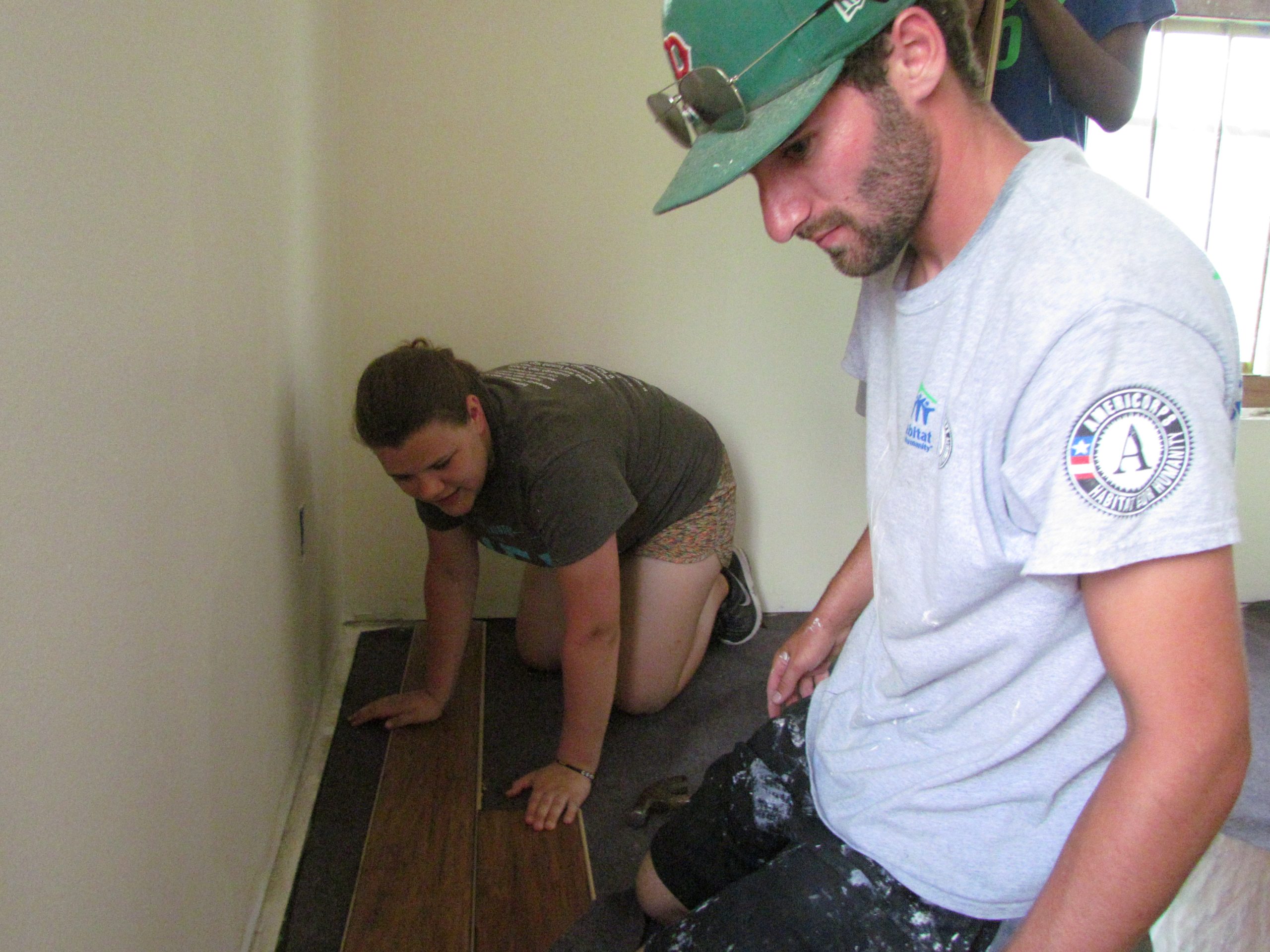
New students are forming their own connections, working alongside future Habitat homeowners and coming to understand what their service truly means. The same sense of gratitude from partner families persists even today.
“It’s a unique experience to be able to work with someone so grateful for your volunteering and see the direct impact it had on them,” said Jonathan Trout, a senior at Lafayette High School.
This sentiment was echoed by Marcell Jackson, a chef with the St. Louis Cardinals who volunteered on Rockwood’s very first trip when he was a high school senior. He has since been on every trip he could. He noted the rough conditions in Perlington during the early years, including uncomfortable plywood beds, unpleasant showering conditions, and unusual canned water, but spoke fondly of the rewards.
“The first year was a rewarding experience after going through a lot of the stuff that we did, because you don’t experience that at home,” Jackson said. “You come down here, you see how the people act and what they do, even just driving down the street. They were very friendly, waving to you. We worked on some guy’s house and he went out himself and purchased us lunch. We were working on his uncle’s house; his uncle had had a heart attack. The friendliness and seeing how they act when you’re helping them out, that’s the reward of it all. It’s great to go back home and say you were actually able to do it. Then after going to college and being able to come back on the trip, it’s rewarding to see the same kids ten years later out here wanting to do the same thing.”
Like many alternative spring break programs, this is also a service learning trip.
“I have learned a lot about the importance of volunteering and what a community really is,” said Trout. Fellow senior Andrew Earley, who attends Rockwood Summit and South Technical High, is majoring in general construction trades. He looked forward to using his skills and helping others on the work site.
“I’m teaching [other students] a little,” Earley said. “I showed them what certain tools are and how to use them. I’ve taught them how to use the tape measure, and I’ve talked to some of the people in charge of our sites. I told them I have my experience behind me, and they put me in charge of some projects. It’s a good taste of the actual field. It’s a good responsibility to take on.”
But even with his skills, he’s learned something on the trip:
“I’ve learned that it takes a lot of communication to get something done so organized and neat,” he said, “and that it doesn’t matter if you have the experience. It’s the effort you put into it that gets the group to the point where we’re at now [in building homes].”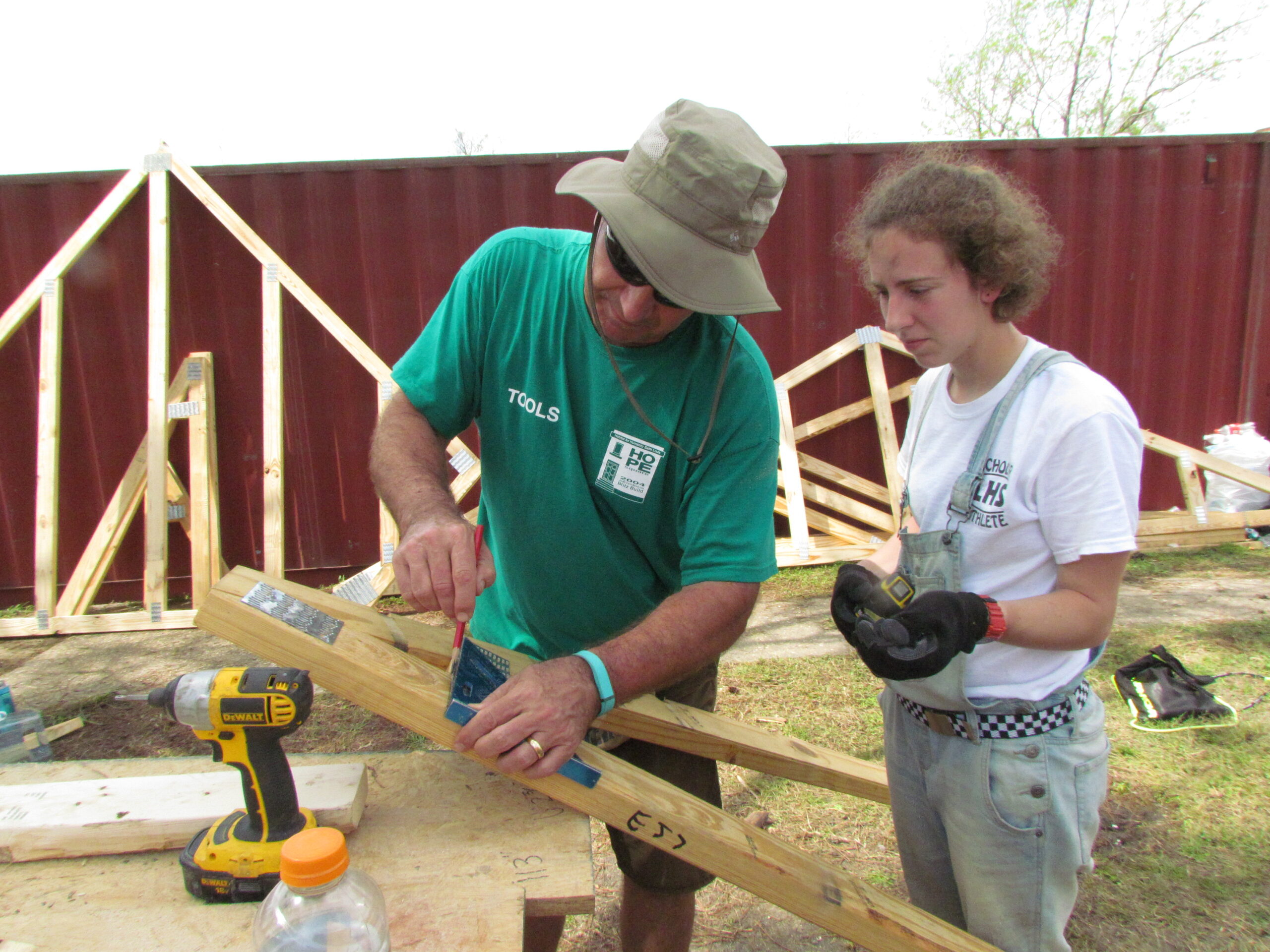
Kelly Zetak has been volunteering with Habitat for Humanity affiliates around the country for 25 years. He started in Houston on a major blitz build as part of a volunteer week through his job at Southwestern Bell. He brought a lifetime of carpentry skills and his architecture degree with him, but others had no experience at all. He echoes Earley’s sentiments when observing, “A lot of people want to give back to the community. It was a good experience working with others. You meet new people. Some people don’t have construction skills, but they want to work. They want to help so, so with just a little bit of coaching, you have a good team.”
He joined the Rockwood trip when his daughter was a senior at Lafayette High six years ago, and he’s been coming along as a chaperone and volunteer leader ever since.
“For some of them, it’s a real struggle,” he said, “because they’ve never had to do this difficult of manual labor before, but it’s a good exposure for them to understand what this business is about and learn what Habitat does for communities.”
“They learn greater appreciation for human beings,” said Jones. “They didn’t know what they were getting into. I showed some slides and videos from years past, but until they actually experience it, some of these kids have never done work like this… We started at this site, and it was just a floor [system]. Here we are in three days, we’ve got going with the trusses and roof and the sides. They’re learning team work, working with three high schools coming together. Hopefully, when they go to college, they’ll do more alternative spring breaks.”



